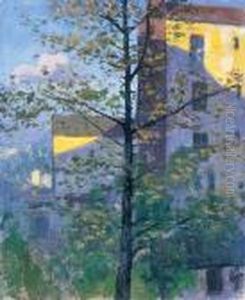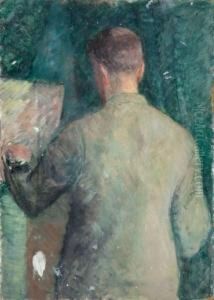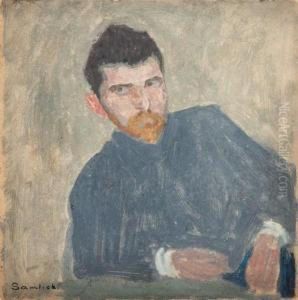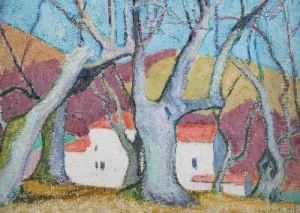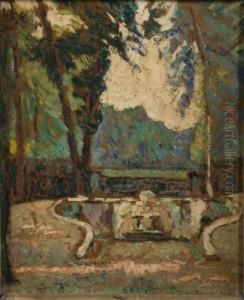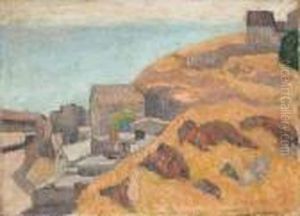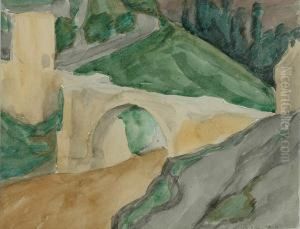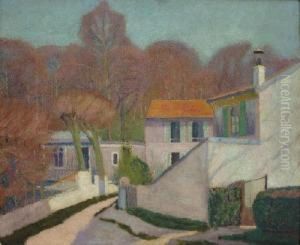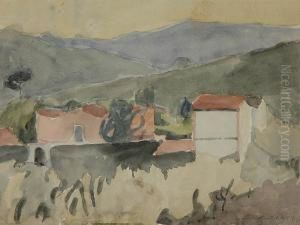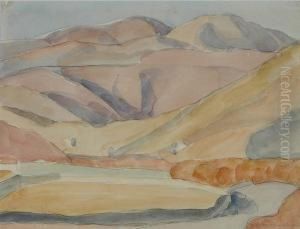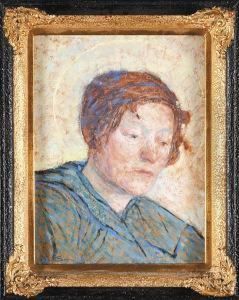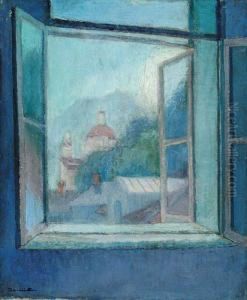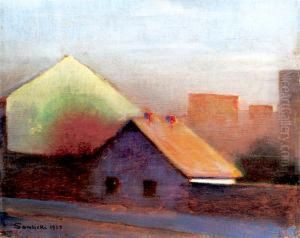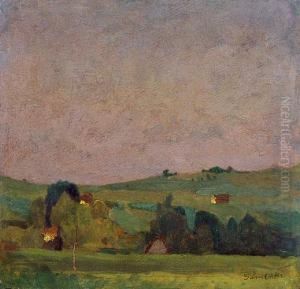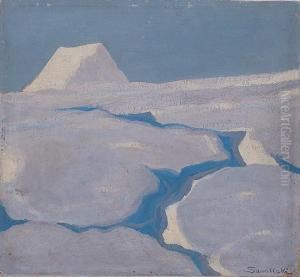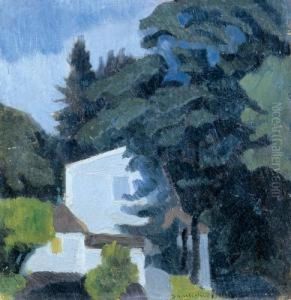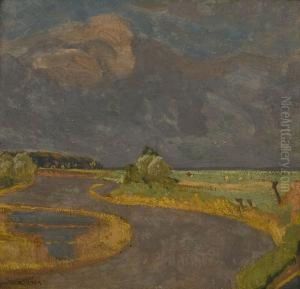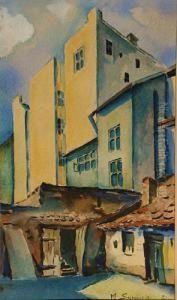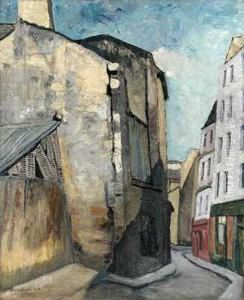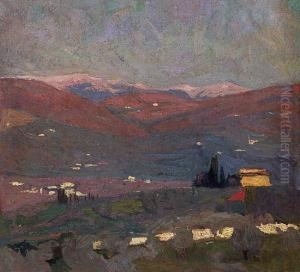Marcin Samlicki Paintings
Marcin Samlicki was a Polish painter, best known for his realistic and atmospheric landscapes that captured the spirit of the Polish countryside and the urban scenery of his time. Born on November 14, 1865, in Warsaw, then part of the Russian Empire, Samlicki grew up during a period of significant political and social changes in Poland. Despite the lack of Polish independence, the nation's cultural and artistic life thrived, and Samlicki became an integral part of this creative movement.
Educated at the Warsaw School of Drawing and later at the Kraków Academy of Fine Arts, he was influenced by the dominant styles of the 19th century, including realism and symbolism. His early works showed a keen interest in the play of light and shadow, which would become a hallmark of his later landscapes. Samlicki's paintings often depicted the Polish landscape in a manner that was both romantic and melancholic, reflecting the national sentiments of the time.
In addition to his landscapes, Samlicki also painted cityscapes, particularly of Warsaw, Kraków, and Lviv. His works capture the historical architecture and the bustling life of these cities with a unique blend of precision and atmospheric mood. He was a master at rendering different weather conditions and times of day, which added a dynamic and emotive quality to his paintings.
Throughout his career, Samlicki remained active in the artistic community. He participated in numerous exhibitions and was a member of various art societies. His contributions to Polish art were recognized by his contemporaries, and his works were well received by critics and the public alike.
Marcin Samlicki's life was marked by the turbulent events of the early 20th century, including World War I and the subsequent reestablishment of Polish independence in 1918. He witnessed the dramatic shifts in the political landscape of Europe and continued to paint through these challenging times. Samlicki's dedication to his craft and his ability to capture the essence of Poland's natural and urban environments made him a significant figure in Polish art history.
He died on June 5, 1944, in Warsaw, leaving behind a legacy of work that continues to be celebrated for its contribution to the national artistic heritage. Samlicki's paintings are held in various museum collections and are considered important examples of Polish landscape and cityscape painting from the turn of the 20th century.
